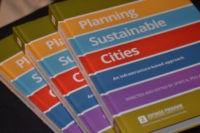About six months after the Envision infrastructure project sustainability rating tool launched in 2012, Superstorm Sandy generated $68.7 billion in damage. Six years and several storms later, the latest version of Envision, just released by Washington, D.C.-based nonprofit Institute for Sustainable Infrastructure, includes new emphasis on resilience and economics in its rating process.
“Resilience has really developed,” says Anthony Kane, managing director of ISI, which was founded by three major engineering and public works groups to manage the Envision rating process in collaboration with the Zofnass Program for Sustainable Infrastructure at Harvard University. “We thought it was important to revise and update the resilience credits.” Like previous versions, Envision v3 rates projects on other criteria that include impacts on quality of life, leadership, natural world, resource allocation, climate and risk.
The latest tool also includes rating criteria for construction—including for safety and waste reduction—as well as for overall energy and water consumption, life-cycle economics, equity and social justice, and sustainable community planning. “Infrastructure is all about impacts to community,” Kane says. Projects now can be verified at or after 95% design completion or at or after 95% construction finish.
V3 was informed by $15 billion worth of new infrastructure projects that have already undergone the program’s third-party verification system. “We have learned a great deal about how Envision is applied to real-world projects,” says John Stanton, ISI president. Kane says ISI also is reviewing future inclusion of infrastructure system operations and maintenance. “The vast majority of infrastructure is existing,” he says.







